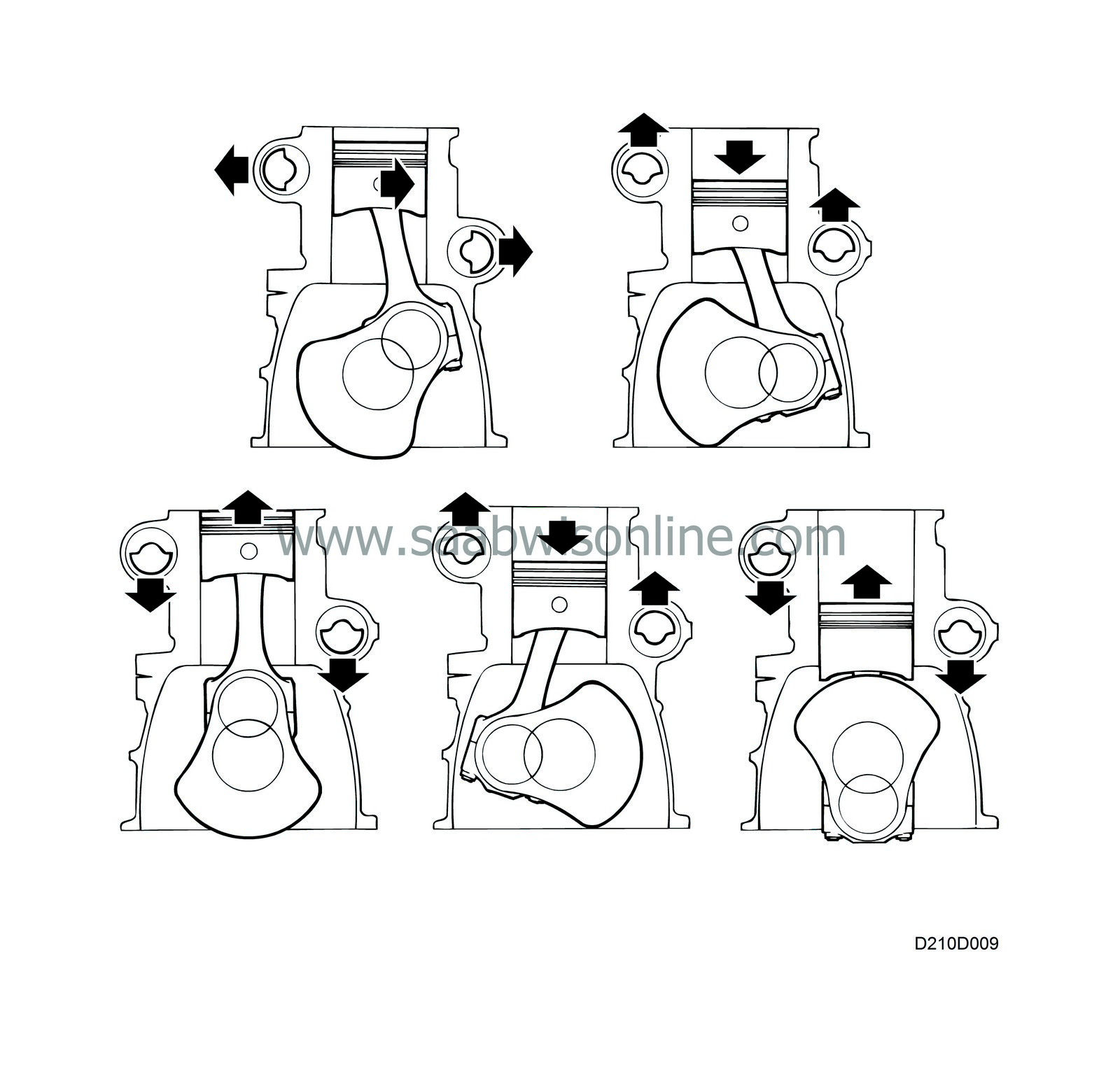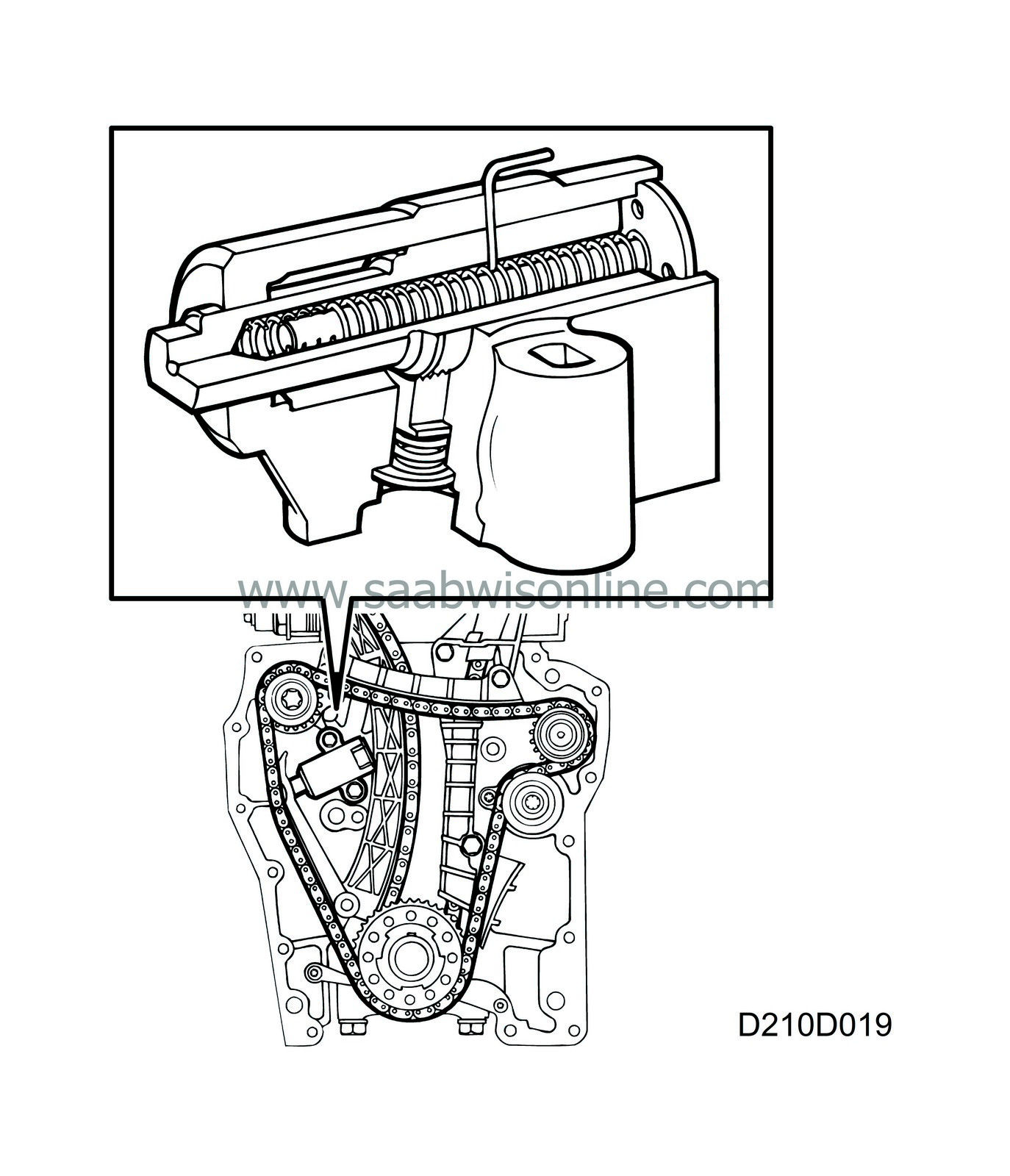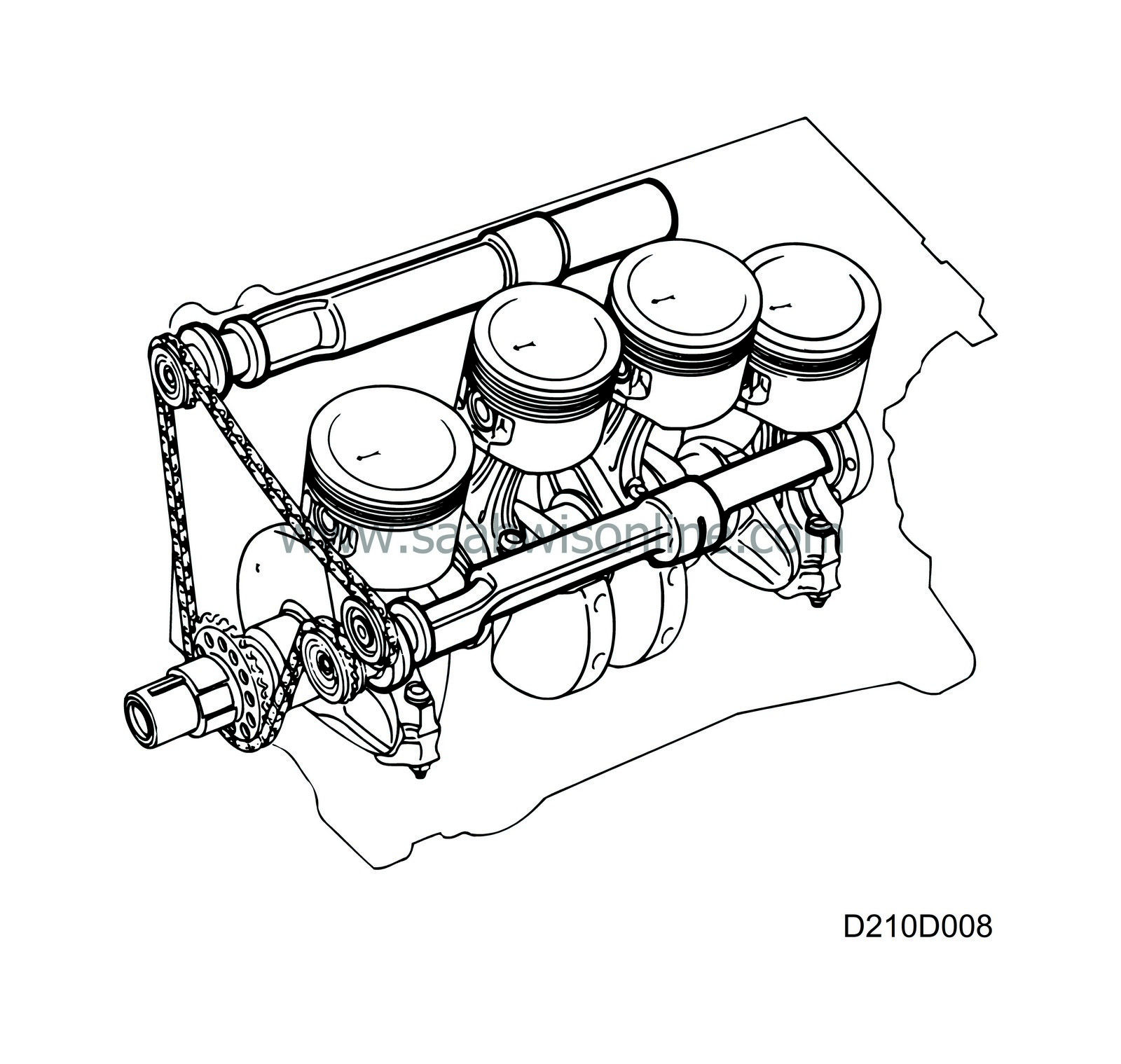Balancer shafts
| Balancer shafts |
| Engine vibration |
Great efforts are continually being made to improve comfort for car drivers and passengers. Two areas that have been addressed are engine vibration and noise level, both of which are a result of the basic design of the engine. Through combustion, during which chemical energy is converted into mechanical energy, gas forces are generated that act on the piston crown. The reciprocating motion of the pistons and connecting rods, combined with the rotation of the crankshaft, generate inertial forces that act on the engine block and cause it to vibrate in various ways. At low engine speeds, these gas forces are greater than the inertial forces but at high engine speeds, the inertial forces are greater than the gas forces. The most significant forces arise periodically once or twice per crankshaft revolution. They are known as first-order and second-order forces respectively. The first-order inertial forces are completely cancelled out since the crankshaft is balanced and the two pisto n pairs, 1-4 and 2-3, reverse their direction simultaneously when they reach top dead centre and bottom dead centre.
| Second-order forces acting vertically |

Inertial forces are generated because both of the descending pistons in a 4-cylinder engine at a certain crankshaft angle move a longer distance than the ascending pistons (the lateral movement of the crankshaft accelerates the descending but delays the ascending piston movement). Therefore, the common centre of gravity of the ascending and descending masses varies, which leads to ascending and descending forces that vary periodically twice per crankshaft revolution and make the engine vibrate vertically.
| Second-order forces acting laterally |
During the power stroke, the piston is pressed against the cylinder wall due to the angle of the connecting rod relative to the cylinder. At higher engine speeds, however, the inertial force is much greater. It can then be said that the crankshaft pulls the piston down and due to the angle of the connecting rod relative to the cylinder, the piston is pressed against the cylinder wall, but this time on the opposite side. Irrespective of the engine speed, the gas and inertial forces acting sideways vary periodically twice per crankshaft revolution and cause the engine to vibrate in a lateral direction.
| The Saab balancer shaft system |

Saab has used the balancer-shaft principle to cancel out second-order inertial forces. Two balancer shafts positioned symmetrically on the sides of the engine block but at different heights above the crankshaft centreline are fitted with eccentrically mounted balance weights. The shafts are driven by a chain and rotate in opposite directions to each other at twice the crankshaft speed.
The shafts' balance weights are located in such a way that they eliminate the ascending and descending forces created by the pistons as described on the previous page.
Since the balancer shafts are situated at different heights above the crankshaft centreline, they also cancel out lateral forces. The torque generated by the balancer shafts is designed to counteract the gas and inertial forces acting in a sideways direction.
The balancer shafts are of identical design and are supported by aluminium bushes in the middle (between cylinders 2 and 3). The bushes are a press fit in the block and are lubricated via separate oilways.
For the balancer shafts to perform as intended, it is absolutely essential for them to be precisely aligned on assembly. Sprocket assemblies of different design for the exhaust and inlet sides are therefore used on the shafts and marked with identifying text.
The balancer shaft, chain sprocket and bearing housing are assembled as a single unit before being mounted in the cylinder block. This unit is then fitted on the side of the engine indicated by the marking on the bearing housing.
| Balancer shaft drive |

The balancer shafts are driven by a chain from which the gear ratio acting on the shaft drive gears is such that the balancer shafts rotate at twice the speed of the crankshaft.
The shaft on the exhaust side rotates in the opposite direction through an idler sprocket fitted in the chain circuit. The chain is located by two fixed chain guides and a pivoted chain guide on which a chain tensioner acts.
When operating, the chain tensioner works with counter force from oil pressure to limit the tension and reduce chain wear as well as to keep chain noise at a minimum.
Further details that reduce chain noise are the thrust rings mounted on the balancer shaft sprocket and idler sprocket.
These thrust rings absorb the force of the chain where it engages the sprocket teeth, providing smoother operation and quieter running.
Due to the smaller surface contact angle, the thrust rings on the exhaust side are larger than those on the intake side.



